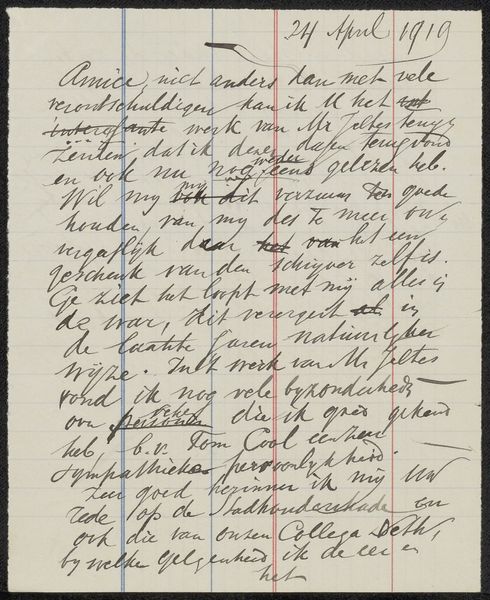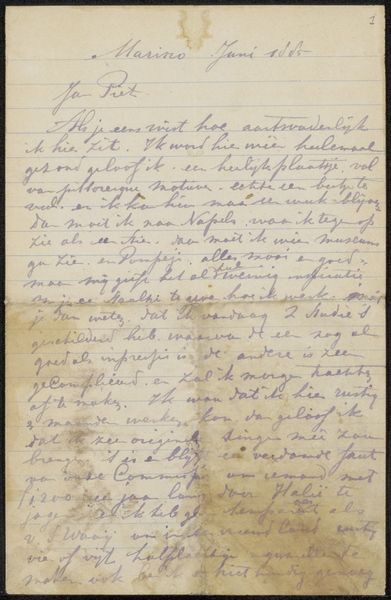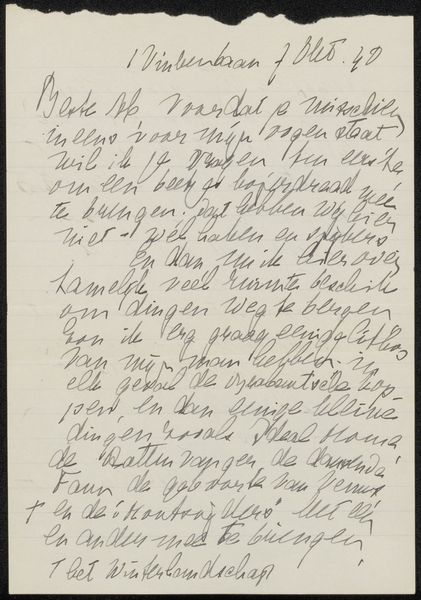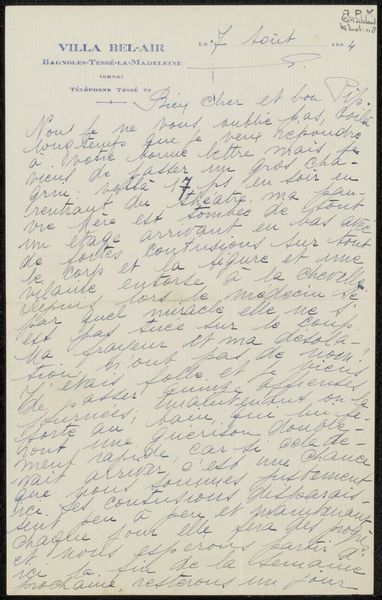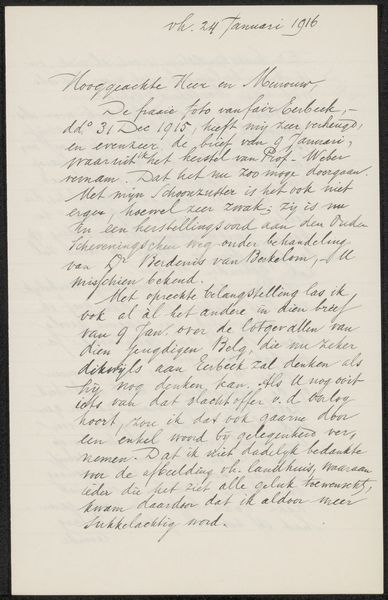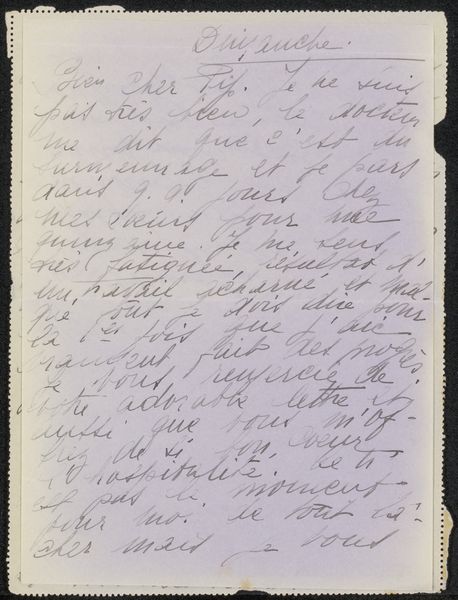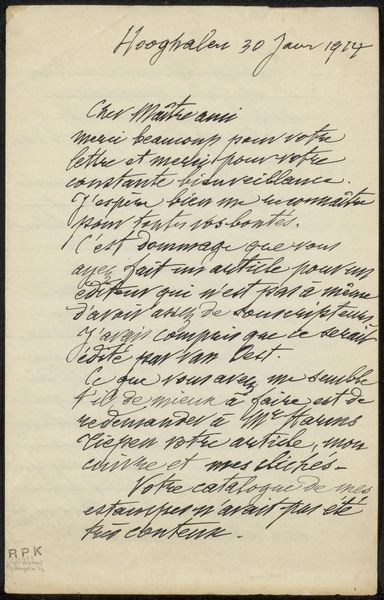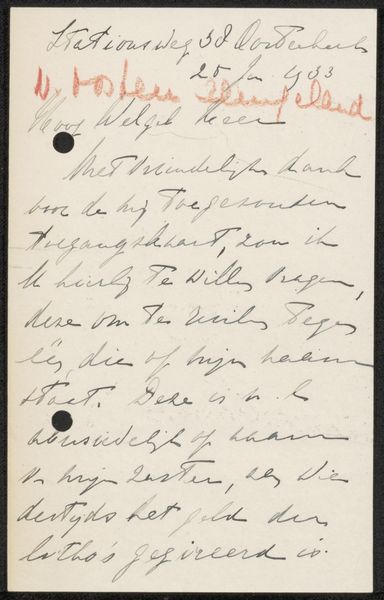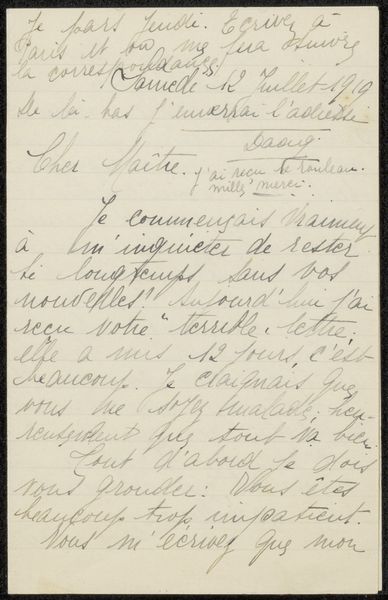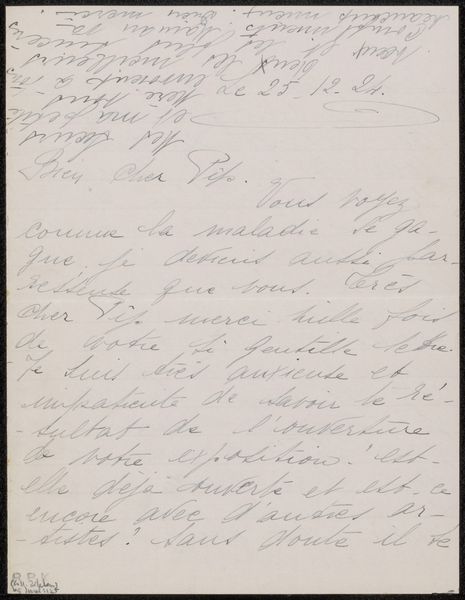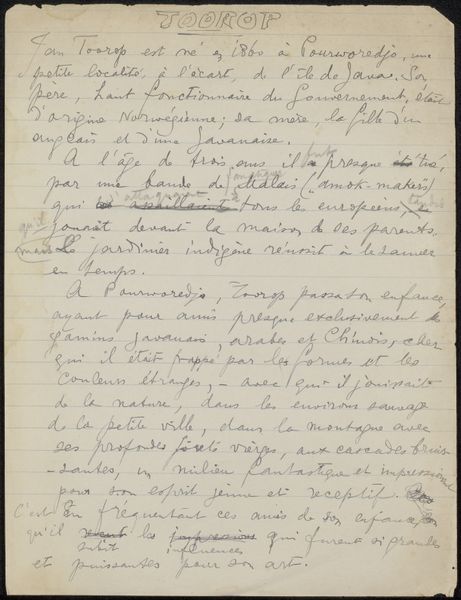
drawing, paper, ink
#
drawing
#
paper
#
personal sketchbook
#
ink
#
ink drawing experimentation
Copyright: Rijks Museum: Open Domain
Curator: We're looking at "Brief aan Willem Bogtman," a letter that Henriëtte Roland Holst-van der Schalk penned, quite possibly in 1942. It’s ink on paper. Editor: My first thought? It feels fragile. The handwriting is so delicate and looping. You get the sense of someone pouring thoughts directly from mind to paper. Almost ethereal, yet anchored in this very real material, the page. Curator: Precisely. The act of writing itself becomes almost a sacred ritual. Note the slant of the script. We perceive script, as children, as coming from adult authority. What memories are locked into the idea of receiving and decoding personal letters in one’s youth? Roland Holst was an ardent socialist. Letters themselves carried a promise for the working class—a channel between the individual and their loved ones who might live across geographic, economic, or even emotional expanses. Editor: Yeah, it is about the immediacy of communication but there's a built-in delay to letters. There's no delete button, so the inscription almost seems weightier, like each stroke carries an immutable quality, like a commitment. The cursive suggests care—this flow in an intentional, and thoughtful mode. Curator: Exactly. Writing in this form in this time was performative in and of itself, indicating time taken. There is almost no erasure, meaning the mind's original intention has gone unaltered here, offering the reader access to an untouched psychological portrait of Roland Holst. Editor: It's fascinating how a simple letter transcends its literal meaning. This becomes a time capsule. Even the simple fact that it’s ink on paper evokes this almost ancient sensibility that even 100 years from then, audiences might marvel at the material aspects of that gesture alone. Curator: I agree, this snapshot invites us to see letter-writing itself not just as a method, but also a cultural symbol that evokes an elegiac sense, a profound intersection of communication, art, and historical memory.
Comments
No comments
Be the first to comment and join the conversation on the ultimate creative platform.
